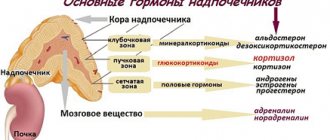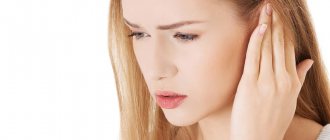Tubo-otitis (tubotympanitis) in an adult or child is an inflammatory process that simultaneously occurs in the middle ear cavity and the Eustachian (auditory) tube. The Eustachian tube is a canal that connects the middle ear cavity to the nasopharynx. Its main function is to equalize the pressure inside the hearing organ with the outside.
This disease is often called eustachitis, but still these are not entirely equivalent diagnoses. Eustachitis is exclusively an inflammation of the auditory tube. If, in addition to it, the middle ear cavity is involved in the inflammatory process, then we are dealing with tubo-otitis.
The diameter of the auditory tube is very small - only two millimeters, so any swelling of its mucous membrane interferes with the full circulation of air in the ear. In this case, the middle ear cavity is poorly ventilated, which leads to an inflammatory process.
Based on the location of inflammation, left-sided and right-sided tubo-otitis are distinguished. If both ears are affected, they speak of bilateral inflammation. The disease “acute bilateral tubo-otitis” is more often diagnosed in children than in adults, since the child’s immunity is more weakened.
Like any other inflammatory process, the disease can occur in two forms - acute and chronic. The disease begins to become chronic if the treatment of the acute form of the disease in an adult or child was carried out incorrectly or was delayed.
Depending on the cause of the inflammation, allergic and infectious tubo-otitis are distinguished.
To begin timely treatment of a disease in an adult or child, you need to know the first signs and causes of the disease. Causes, symptoms and treatment of tubo-otitis in adults and children - we will talk about all this further.
Causes of the disease in adults and children
The reason for the development of tubo-otitis in adults and children is dysfunction of the Eustachian tube, that is, a violation of its patency. How does this condition occur? From the cavity of the nasopharynx, the infection enters the Eustachian tube (that is, the infection occurs not from the outside, but from the inside), which provokes its swelling. The auditory tube communicates directly with the middle ear cavity, so the infection gradually penetrates there as well. Swelling of the auditory tube disrupts the natural ventilation of the middle ear cavity, and an inflammatory process starts in it. This condition is accompanied by increased formation of mucous or purulent masses. The discharge accumulates and eventually ruptures the eardrum and comes out.
Infection in the Eustachian tube in an adult or child can be caused by the following diseases and conditions:
- acute and chronic rhinitis, sinusitis, sinusitis, tonsillitis, pharyngitis, etc.;
- deviated nasal septum;
- adenoids;
- polyps;
- enlarged nasal turbinates;
- allergic reactions;
- infectious diseases (acute respiratory viral infection, influenza, measles, scarlet fever, whooping cough, etc.);
- neoplasms of the nasopharynx.
Indications for the study of auditory functions
The auditory or eustachian tube is an osteochondral canal about 3.5 cm long. This canal connects the tympanic cavity with the nasopharynx, and performs a number of functions, including:
- Ventilation. Thanks to the communication between the tympanic cavity and the nasopharynx, the pressure on both sides of the eardrum is equalized. Equal pressure is a prerequisite for vibrations of the eardrum to occur under the influence of sound waves.
- Drainage. Through the auditory tube, secretions flow from the tympanic cavity into the nasopharynx.
- Protective. Mucous glands secrete bactericidal mucus. This mucus contains immunoglobulins, which further enhance immune defense at the local level.
When the auditory tube becomes inflamed, eustachitis, its functions are impaired. This is facilitated by some anatomical features. The auditory tube is very narrow - its diameter is 2 mm. Therefore, with inflammatory edema, its patency is quickly impaired. The communication between the tympanic cavity and the nasopharynx is lost. The air in the tympanic cavity is absorbed by the mucous membrane, and negative pressure quickly forms here.
Conducting sound waves at the level of the eardrum and tympanic cavity becomes difficult. Conductive hearing loss develops . The mucous secretion is not drained, but accumulates in the tympanic cavity and suppurates with the development of purulent otitis .
The situation is further aggravated by the fact that with chronic inflammation, adhesions are formed in the tubal lumen - areas of sticking together of the mucous membrane. Subsequently, adhesions appear at the site of adhesion.
The inflammatory process in the tubes most often occurs secondarily when a bacterial infection is introduced into the tube from the nose and nasopharynx. Sometimes, against the background of inflammation, the tubal tonsil enlarges and blocks the opening to the tube. In this case, pipe conductivity is also disrupted. To diagnose these conditions, we use various methods to study the functions of the auditory tubes.
Symptoms of tubootitis
Knowledge of the symptoms and treatment of tubo-otitis in adults and children will help you recognize the problem in a timely manner, contact an ENT doctor in time, and thereby speed up your recovery.
A characteristic symptom of the disease is hearing loss. When a person yawns and swallows saliva, the patency of the auditory tube is temporarily restored and hearing improves. But then the hearing problem quickly returns to its original position. In the early stages of the disease, symptoms may not be as pronounced. But when the inflammation moves to the middle section, the disease manifests itself very intensely.
The main symptoms of tubo-otitis also include:
- feeling of stuffiness, noise and ringing in the ears;
- a feeling that fluid is overflowing in the head;
- a person hears his own echo when he talks;
- headache;
- increased fatigue;
- nausea;
- dizziness;
- discharge from the ear canal (not always).
The pain may not appear at all, or it may be moderate. There is no increase in temperature, or it remains at no more than 37.5?.
If treatment for tubotympanitis is not started at the stage of the appearance of these symptoms, the acute form of the disease may become chronic.
Methods for examining the auditory tube
These methods differ in the principle of implementation, in complexity, and in information content.
Otoscopy
Inspection of the external auditory canal using an ear mirror allows only indirect judgment of tubal obstruction. In this case, the negative pressure in the tympanic cavity causes the eardrum to retract.
Catheterization of the auditory tube
In this case, a rigid metal catheter is used.
The outer end is funnel-shaped, and the inner, working, end is beak-shaped. This curved end is advanced along the lower nasal passage, then through the nasopharynx to the mouth of the auditory tube. Once it is in the eustachian tube, air is forced through the outer end. This diagnostic procedure is traumatic. In addition, it is contraindicated in acute infectious processes in the nose and nasopharynx, as well as in purulent otitis. Therefore, it is rarely resorted to nowadays.
Politzer blowing
A Politzer balloon is used.
This is a rubber bulb with a volume of 200-250 ml with a metal olive at the end. The olive is inserted into the vestibule of the nose. The second nostril is pressed against the nasal septum with a finger to seal it. After this, the patient is asked to pronounce a certain word, for example, “cuckoo” or “steamboat.” During pronunciation, the velum palatine moves and isolates the nasopharynx from the oropharynx. At this moment, the doctor squeezes the pear. A directed stream of air from the olive through the nasal passages enters the nasopharynx, and then into the auditory tube.
With normal patency of the auditory tube, the patient feels a characteristic push. However, the patient’s sensations in this case are subjective and therefore unreliable. Therefore, for this test, a rubber tube with olives at both ends is used. One olive is placed in the patient's ear, and the other in the ear of the doctor conducting the examination. When the conductivity of the auditory tubes is satisfactory, the doctor hears a characteristic blowing or clapping sound.
It should be noted that Politzer blowing can be carried out not only for diagnostic, but also for therapeutic purposes. Under the influence of an air stream, the pipe adhesions are separated and patency is restored. However, in some cases the procedure is accompanied by undesirable effects: headache, dizziness, severe pain in the ear.
With cicatricial changes in the eardrum, it may rupture. In addition, for some, due to congenital weakness of the muscles of the soft palate, blowing is difficult. Such patients need to take a sip of water instead of pronouncing words.
Functional tests
Also based on changes in pressure in the tympanic cavity.
- Empty sip test. The patient makes a swallowing movement.
- Toynbee's test. Performed with the nose pinched. To do this, the patient presses the wings of the nose against the septum, and then makes a swallowing movement. When patency is maintained, negative pressure is created in the tympanic cavity.
- Valsalva maneuver. After a deep breath, the patient pinches his nose and tries to exhale with his mouth closed. When straining, the pressure in the tympanic cavity increases.
Normally, when performing these tests, the patient feels a characteristic cracking sound on the side of the ear being tested. If the tubal lumen is completely blocked, there is no sensation. If patency is partially preserved against the background of inflammatory changes, the sensations when performing the Valsalva maneuver may be different: squeaking, gurgling. If the integrity of the eardrum is compromised, the Valsalva maneuver is accompanied by the release of air from the external auditory canal.
Puchalski's test
This is a modification of the above functional tests.
For greater reliability, here, as with Politzer blowing, a rubber tube with olives at the ends is used. Depending on which test the doctor hears noise, determine the degree of patency of the auditory tubes: I. Positive empty throat test. II. Positive Toynbee test. III. Positive Valsalva maneuver. IV. The noise is not felt by the doctor during any of the listed tests.
The first degree of cross-country ability, as you might guess, is the highest.
Ear manometry
The ear pressure gauge can be made in different modifications. In general terms, it is an obturator, a device that blocks the external auditory canal. This could be an olive oil, a stopper cap, a rubber capsule with a bulb for pumping air. The obturator communicates with a thin graduated tube filled with colored alcohol.
After inserting the obturator into the external auditory canal, the patient performs the above-described functional tests. Normally, the flow of air into the tympanic cavity through the auditory tube causes the eardrum to vibrate. Vibrations of the eardrum through the external auditory canal are transmitted to a column of fluid, which moves by 10-15 mm. The degree of patency is determined in the same way as in the previous test.
Impedance measurement of the auditory tube
Measurement of acoustic impedance, the resistance of the structures of the inner ear in response to sound. To do this, use a compact device, an impedance meter. As part of impedansometry, tympanometry is performed, which displays the reaction of the eardrum when sound passes through. The obtained data is processed by the device and provided in the form of a graphic curve or tympanogram.
Endoscopy
Examination of the nose using an endoscopic device, a rhinoscope, can also be informative. During rhinoscopy, the doctor evaluates the condition of the nasal cavity, as well as the nasopharynx with the tubal tonsils and the mouths of the auditory tubes located in it.
When should you see a doctor?
Whether the treatment is infectious or the treatment of allergic tubo-otitis, you need to start as quickly as possible if you notice that your hearing is decreasing and your ears are constantly “stuffed up”. This is a rather dangerous inflammation that cannot be dealt with without medical help. Long-term dysfunction of the eustachian tube can lead to adhesions between the auditory ossicles (stapes, malleus and incus), which are involved in sound transmission. This is fraught with permanent hearing loss. The disease can also cause pathologies of the auditory nerve and lead to sensorineural hearing loss. If inflammation leads to the accumulation of purulent masses in the ear, acute purulent otitis media may develop. This diagnosis also has a lot of complications: at a minimum, in the absence of full-fledged therapy, it can develop into chronic otitis in a child and in an adult patient, and at maximum, lead to meningitis, sepsis or complete deafness. Therefore, the disease must be diagnosed as early as possible, as soon as the slightest discomfort appears and does not go away.
Diagnostics
Diagnosis of the disease is not difficult for an experienced ENT doctor. The complaints that the patient describes are quite typical.
An appointment with a doctor begins with collecting an anamnesis of the patient’s life and health. The otolaryngologist asks the patient about the symptoms that are bothering him and the time of their onset.
This is followed by a direct examination of the ear cavity (otoscopy) and nose (rhinoscopy).
To determine the degree of hearing loss, an audiometric study is performed. To study the functions of the components of the middle ear, a tympanometric study is performed.
To determine the type of inflammatory agent and its sensitivity to antibiotics, secretions from the ear canal are sent for laboratory analysis. If the allergic nature of the disease is suspected, the patient is referred for allergy testing.
Breath
- Standing, inhale deeply through your nose (nostrils flared and tense), the stomach protrudes, exhale slowly through the mouth, the stomach retracts.
- Standing, inhale deeply through your nose (nostrils flared and tense), stomach protrudes, hold your breath, then bend forward, arms relaxed down, exhale.
- Sitting, inhale deeply through your nose (nostrils flared and tense), exhale through your nose.
- Open your mouth wide - yawn. Then swallowing, i.e. closing the upper palate with the back of the tongue.
- Open your mouth wide, take a deep breath, close your mouth, swallow.
- Open your mouth wide, breathe deeply through your mouth.
Treatment of tubootitis
For patients who are faced with this diagnosis, the question logically arises: “How to cure tubo-otitis at home?” Without contacting an otolaryngologist - no way! The disease requires an integrated approach, which consists of taking medications prescribed by an ENT doctor at home and performing physiotherapeutic procedures in an ENT clinic.
The patient may be prescribed the following medications:
- antibiotics for oral administration (for example, Amoxiclav, Azithromycin);
- antibacterial ear drops for eustachitis and tubootitis (Otofa, Normax).
Important: both oral antibiotics and drops should be prescribed only as prescribed by an ENT doctor. The drug for treatment and its dosage are determined only by the doctor after examining the patient.
- vasoconstrictor drugs for the nose (“Otrivin”, “Nazivin”, “Galazolin”, for children, respectively, children’s drops);
- antihistamines for the allergic form of the disease (Zyrtec, Zodak, Suprastin);
- immunomodulators (for example, “Bronchomunal”);
- Ear drops of the Otipax type for tubo-otitis are used to relieve pain and relieve inflammation in the ear.
Effective for tubo-otitis are procedures carried out in an ENT clinic, for example, blowing out the auditory tubes using an ENT machine. It is carried out in combination with the procedure - pneumomassage of the eardrum. Both manipulations reduce and relieve persistent ear congestion. Another complex but very effective procedure is catheterization of the auditory tube using a Hartmann cannula. Catheterization for tubo-otitis requires a lot of experience and skill of an ENT doctor, but brings a huge therapeutic effect.
Physiotherapy in the ENT clinic also helps speed up the healing process: infrared laser therapy, vibroacoustic therapy, ultraviolet irradiation, ultrasound therapy, photodynamic therapy, magnetotherapy.





